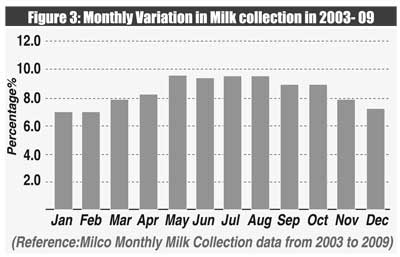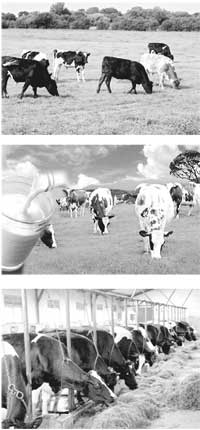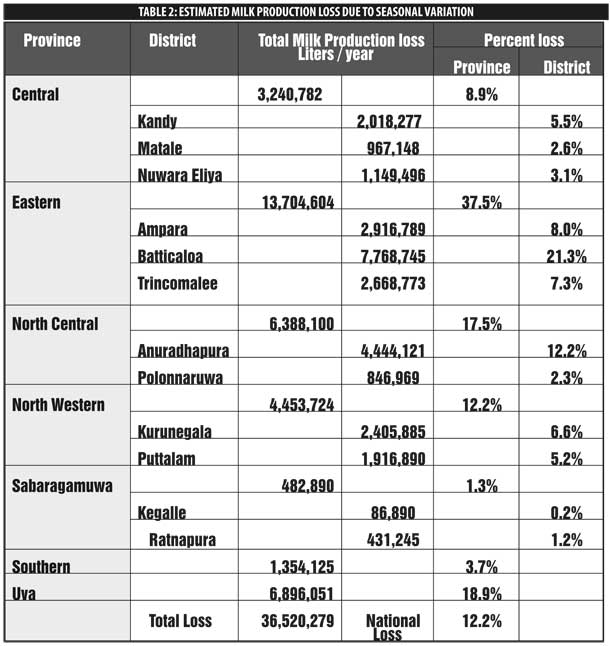Reply To:
Name - Reply Comment
Last Updated : 2024-04-25 00:00:00
 “Effort is important, but knowing where to make an effort makes all the difference”
“Effort is important, but knowing where to make an effort makes all the difference”
 The DZ consisting 63.5%, of the total land area has low rainfall coupled with high potential evapotranspiration (PET) rates. Consequently, farmers experience water deficits for much of the year limiting the rain-fed growing period to less than 150 days per year and extensive habitation is only possible where water is stored for irrigation. Crop production initiates with rains or with the availability of tank water in the DZ and harvested at the end of the season, but animal products such as egg and milk are produced throughout the year, without seasonal restrictions. Past studies highlighted the fact that there is a seasonal variation in milk collection and production, where it was captured by the monthly variation in milk procurement. The national monthly in milk collection from year 2003 to year 2009 in figure 3 confirms the variation within the year shown by Ibrahim et al (1999) .
The DZ consisting 63.5%, of the total land area has low rainfall coupled with high potential evapotranspiration (PET) rates. Consequently, farmers experience water deficits for much of the year limiting the rain-fed growing period to less than 150 days per year and extensive habitation is only possible where water is stored for irrigation. Crop production initiates with rains or with the availability of tank water in the DZ and harvested at the end of the season, but animal products such as egg and milk are produced throughout the year, without seasonal restrictions. Past studies highlighted the fact that there is a seasonal variation in milk collection and production, where it was captured by the monthly variation in milk procurement. The national monthly in milk collection from year 2003 to year 2009 in figure 3 confirms the variation within the year shown by Ibrahim et al (1999) .
 failed to reveal this information, thus preventing measures to mitigate this situation by the government or private sector.
failed to reveal this information, thus preventing measures to mitigate this situation by the government or private sector.



Add comment
Comments will be edited (grammar, spelling and slang) and authorized at the discretion of Daily Mirror online. The website also has the right not to publish selected comments.
Reply To:
Name - Reply Comment
US authorities are currently reviewing the manifest of every cargo aboard MV
On March 26, a couple arriving from Thailand was arrested with 88 live animal
According to villagers from Naula-Moragolla out of 105 families 80 can afford
Is the situation in Sri Lanka so grim that locals harbour hope that they coul